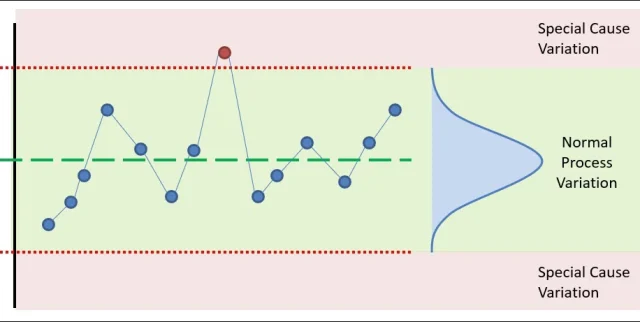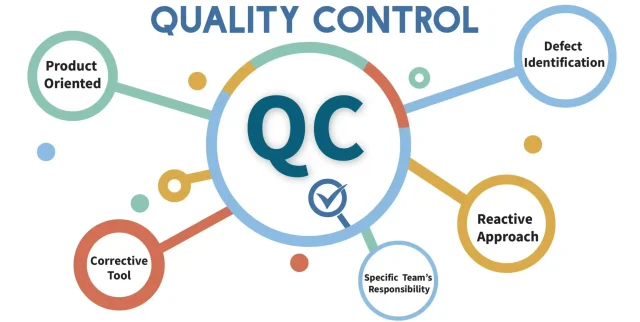QUALITY MANAGEMENT
Quality Assurance
Quality Assurance (QA) is a systematic process employed to ensure that products, services, or processes meet specified requirements and conform to established standards. The primary goal of QA is to identify and rectify defects, errors, or deviations before they reach the customers or end-users, thus ensuring the delivery of a high-quality final product or service.
Quality Assurance is often complemented by Quality Control (QC), which focuses on inspecting and testing the final product to identify defects. Both QA and QC are integral parts of a broader quality management system aimed at delivering products and services that meet or exceed customer requirements and expectations.

Key principles and objectives of Quality Assurance:
- Consistency: QA aims to ensure consistent and uniform quality in all aspects of the product or service.
- Customer Satisfaction: The ultimate objective of QA is to meet or exceed customer expectations, ensuring their satisfaction and loyalty.
- Continuous Improvement: QA is not a one-time activity but an ongoing process. It involves constant monitoring, feedback collection, and process refinement to enhance overall quality.
- Prevention over Detection: Instead of merely identifying and correcting defects, QA emphasizes preventing them in the first place. This approach reduces the cost and effort required to rectify issues.
- Standardization: QA establishes and enforces standards, guidelines, and best practices across the organization to maintain consistency and uniformity.
- Documentation: Detailed documentation of processes and procedures is essential for effective QA. It allows for traceability and serves as a reference for future improvements.

Quality Circle
A Quality Circle (QC) is a group of employees within an organization who come together voluntarily to identify, analyze, and solve work-related problems and improve the overall quality of products, processes, or services. Quality Circles are a fundamental aspect of Total Quality Management (TQM) and are based on the principle that employees at all levels of an organization can contribute to continuous improvement.
To ensure the success of Quality Circles, it is essential for management to provide the necessary resources, create a supportive environment, and consider and implement the proposed solutions. Regular monitoring and feedback help in measuring the impact of the Quality Circle initiatives and further refining the process.

Key principles and objectives of Quality Circle:
- Voluntary Participation: Membership in a Quality Circle is typically voluntary, allowing employees to participate willingly and express their ideas without coercion.
- Small Group: Quality Circles usually consist of a small group of employees, typically 5 to 10 members, who work together to address specific issues or challenges.
- Regular Meetings: Quality Circles meet regularly (e.g., weekly or monthly) to discuss problems, share ideas, and propose solutions.
- Problem-Solving Focus: The primary objective of a Quality Circle is to identify and solve problems related to quality, productivity, safety, or any other aspect that impacts the organization's performance.
- Participatory Approach: Members actively participate in discussions and decision-making, contributing their knowledge, skills, and experiences to find solutions.
- Management Support: For successful implementation, Quality Circles require support and encouragement from management to implement proposed solutions and make necessary changes.
- Training and Skill Development: Members may receive training in problem-solving techniques, group dynamics, and other relevant skills to enhance their effectiveness.
SPC Chart
SPC (Statistical Process Control) charts, also known as control charts, are graphical tools used in quality control and process management to monitor and analyze the variation in a process over time. They help identify trends, patterns, and abnormal variations that could indicate potential issues in the process. SPC charts are widely used in various industries to maintain and improve the quality of products and services.
The primary purpose of SPC charts is to distinguish between common cause variation and special cause variation

Key principles and objectives of SPC Chart:
- Visual Representation: SPC charts provide a visual representation of process data over time. By plotting data points on the chart, it becomes easier to identify patterns, trends, and variations in the process.
- Control Limits: SPC charts have upper and lower control limits that are calculated based on the process data.
- Central Line: The central line on an SPC chart represents the process average or mean. It is typically calculated as the average of all data points and is used as a reference point for assessing process performance.
- Data Points: Each data point on the SPC chart represents a measurement or observation taken at a specific time interval.
- Common Cause and Special Cause Variation: SPC charts help distinguish between common cause variation and special cause variation. Common cause variation arises from inherent randomness in the process and is expected. Special cause variation, on the other hand, occurs due to external factors or specific events and requires investigation.
- Process Improvement and Quality Control: SPC charts are essential tools for process improvement and quality control. They enable organizations to identify areas for improvement, reduce process variation, and enhance overall process performance.
- Real-Time Monitoring: SPC charts can be continuously updated with new data, allowing for real-time monitoring of processes. This timely feedback helps organizations quickly respond to any deviations from the standard and make necessary adjustments.

Quality Control
Quality control (QC) is a systematic process used to ensure that products or services meet specific quality standards and comply with customer requirements. The primary goal of quality control is to identify defects, inconsistencies, and deviations from the desired quality level and take corrective actions to address them before products are released to customers. It is an essential part of quality management and is commonly used across various industries to ensure customer satisfaction and maintain a competitive edge.

Key principles and objectives of Quality Control:
- Product-oriented: Is a approach refers to a focus on ensuring that the final product meets the desired quality standards and specifications. This approach centers around the inspection, testing, and evaluation of the actual product to identify and address any defects or nonconformities before it reaches the customers.
- Corrective tool: Is a mechanism or approach used to identify and address issues or defects in a product or service after they have been detected. The purpose of corrective tools is to implement appropriate actions that rectify the root causes of problems and prevent their recurrence.
- In quality control, specific teams play crucial roles in ensuring that products or services meet the desired quality standards. The responsibilities of these teams may vary depending on the organization's size, industry, and the complexity of the quality control process.
- Reactive approach: In quality control refers to addressing quality issues and defects after they occur rather than proactively preventing them. It involves detecting and correcting problems that have already manifested in the product or service, rather than focusing on preventing those issues from occurring in the first place.
- Defect identification is a critical process that involves identifying and classifying defects or nonconformities in products or services. The goal is to detect and address issues early in the production process to ensure that the final output meets the desired quality standards.
